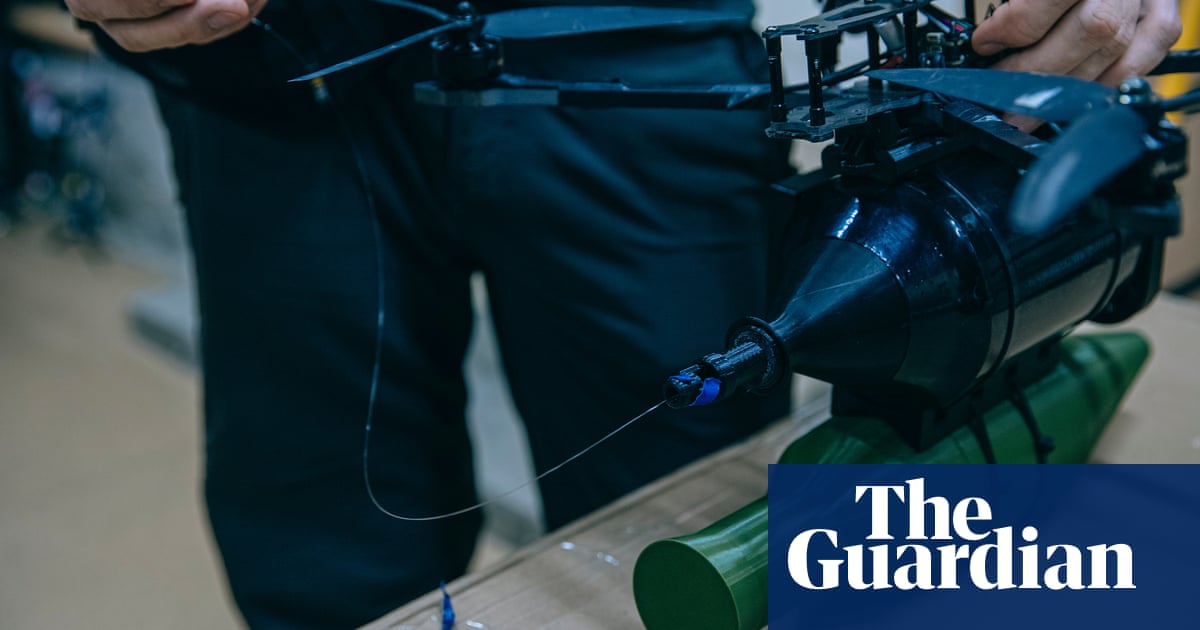At a secret workshop in Ukraine’s north-east, where about 20 people assemble hundreds of FPV (first person view) drones, there is a new design. Under the frame of the familiar quadcopter is a cylinder, the size of a forearm. Coiled up inside is fibre optic cable, 10km (6 miles) or even 20km long, to create a wired kamikaze drone.
Capt Yuriy Fedorenko, the commander of a specialist drone unit, the Achilles regiment, says fibre optic drones were an experimental response to battlefield jamming and rapidly took off late last year. With no radio connection, they cannot be jammed, are difficult to detect and able to fly in ways conventional FPV drones cannot.
“If pilots are experienced, they can fly these drones very low and between the trees in a forest or tree line. If you are flying with a regular drone, the trees block the signal unless you have a re-transmitter close,” he observes. Where tree lined supply roads were thought safer, fibre optic drones have been able to get through.



Don’t these reveal the location of the operator, though?
How? If you think they’re going to successfully follow a filament thinner than human hair over 6 miles I’d love to know
Ok, but then how strong can such a filament be? Seems like anything and everything could potentially severe the connection
there’s literally 70 years of fly by wire minitions I’m sure there’s a rich back and forth series of countermeasures and baffles
Since the filament is not under tension as it is unwinding I think unless someone intentionally cuts it or it jams somehow it should not jus break.
I mean after the attack the strands left could be used to trace operation spots. But I guess you’re right, I didn’t realise they were that thin
You may be right, but not quickly and either end can cut and run of they find the line intercepted. These usually aren’t launched from a stationary base
Drop off this drone with a different drone. Then fly it out wherever the other drones couldn’t get to.